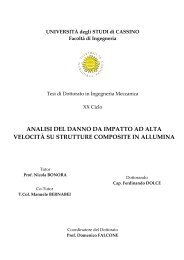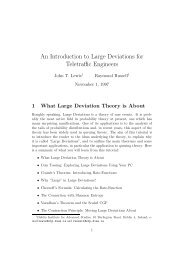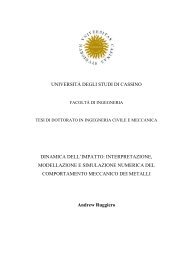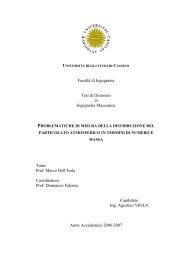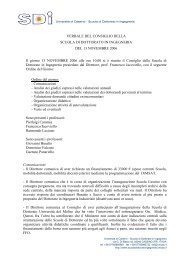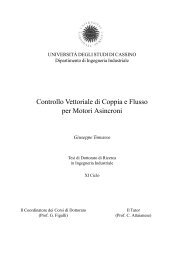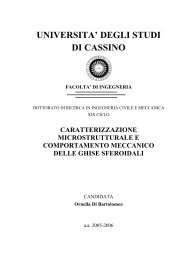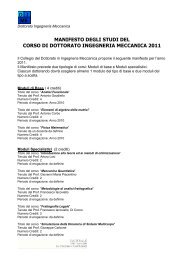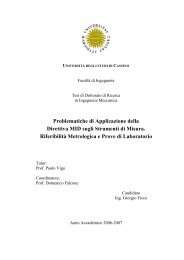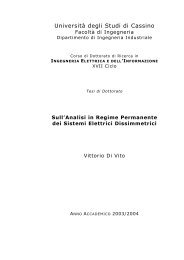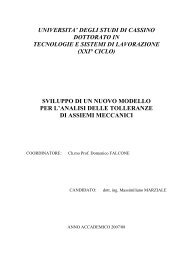Finite Strain Shape Memory Alloys Modeling - Scuola di Dottorato in ...
Finite Strain Shape Memory Alloys Modeling - Scuola di Dottorato in ...
Finite Strain Shape Memory Alloys Modeling - Scuola di Dottorato in ...
Create successful ePaper yourself
Turn your PDF publications into a flip-book with our unique Google optimized e-Paper software.
1 INTRODUCTIONScience and technology have made amaz<strong>in</strong>g developments <strong>in</strong> the design ofelectronics and mach<strong>in</strong>ery us<strong>in</strong>g standard materials, which do not have particularlyspecial properties, i.e. steel, alum<strong>in</strong>ium and gold. However, dur<strong>in</strong>g the last decade,there was a great <strong>in</strong>terest <strong>in</strong> advanced materials called ‘smart materials’. They haveone or more properties that can be significantly changed <strong>in</strong> a controlled fashion byexternal stimuli, such as stress, temperature, electric or magnetic fields. These<strong>in</strong>clude piezoelectric materials, magneto-rheostatic materials, electro-rheostaticmaterials and shape-memory alloys. For example, when a piezoelectric material isdeformed, it gives off a small but measurable electrical <strong>di</strong>scharge. Alternately, whenan electrical current is passed through a piezoelectric material it experiences asignificant <strong>in</strong>crease <strong>in</strong> size, up to a 4% change <strong>in</strong> volume. Piezoelectric materials aremost widely used as sensors <strong>in</strong> <strong>di</strong>fferent environments. They are often used tomeasure fluid compositions, fluid density, fluid viscosity, or the force of an impact(airbag sensor). Electro-rheostatic (ER) and magneto-rheostatic (MR) materials arefluids which can experience a dramatic change <strong>in</strong> their viscosity. These fluids canchange from a thick fluid, similar to motor oil, to nearly a solid substance with<strong>in</strong> thespace of a millisecond when exposed to a magnetic or electric field. MR fluidsexperience a viscosity change when exposed to a magnetic field, while ER fluidsexperience similar changes <strong>in</strong> an electric field. MR are be<strong>in</strong>g developed for use <strong>in</strong> carshocks, damp<strong>in</strong>g mach<strong>in</strong>e vibration, etc., while ER fluids have ma<strong>in</strong>ly beendeveloped for use <strong>in</strong> clutches and valves, as well as eng<strong>in</strong>e mounts designed toreduce noise and vibration <strong>in</strong> vehicles.In a <strong>di</strong>fferent way, <strong>in</strong> shape-memory alloys, an <strong>in</strong>put of thermal energy, which canalso be produced through resistance to an electrical current, alters the microstructurethrough a crystall<strong>in</strong>e phase change. This change enables multiple shapes <strong>in</strong>relationship to the environmental stimulus.1



